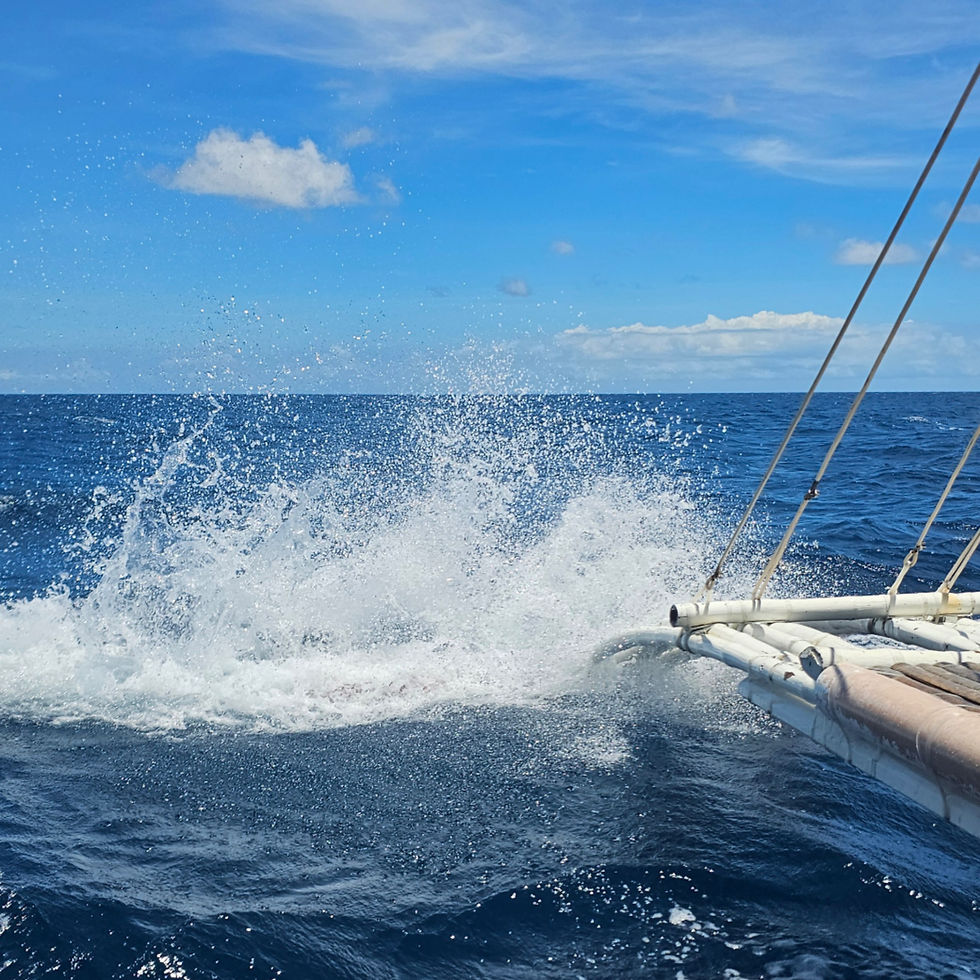Task Force Eyes New Regulations For Boracay Garbage Woes
- Mark Santiago
- Feb 1, 2020
- 4 min read
By Jun N. Aguirre

The Task Force Boracay is eyeing to come up with new sets of regulations for garbage collection, following the onslaught of typhoon “Ursula”.
Task force chief Secretary Roy Cimatu of the Department of Environment and Natural Resources (DENR) said that his office failed to include in the executive order the regulations concerning calamities.
The executive order signed by President Rodrigo Duterte was originally meant to rehabilitate this resort island from six months to two years.
“We saw the pile up of debris following the recent onslaught of Ursula in Boracay. There are problems and we are releasing a new set of rules soon,” Cimatu said as he led the emergency meeting to address garbage woes at Casa Pilar Resort on January 4.
For his part, acting mayor Floribar Bautista who attended the task force meeting said that his office will be supporting the new sets of policies to be implemented by the DENR.
“The task force has not anticipated the garbage woes in the ongoing rehabilitation of Boracay Island. We will be supporting whatever the DENR wanted us to implement,” said Bautista.
One of the problems that contributed to the piling of garbage on Boracay Island was the non-collection of garbage of ECOS Sanitary Landfill and Waste Management Corporation, the private company that was commissioned to haul garbage in Boracay.
Alex Carlo Magno, spokesman for ECOS said that around 43 of their workers went AWOL (absent without leave) soon after the devastation of typhoon Ursula.
“They claimed that they were not paid. Based on our records, they were not paid only for the last two weeks because of the long holiday. They were promised to be paid their 13th month pay by first week of January but they still failed to go to work. Some of the workers even damaged our hauling trucks, so the company is planning to charge the workers of economic sabotage,” he said.
On the new regulations being proposed by the DENR, Magno said the company has proposed during the task force meeting to enforce a house-to-house collection charging each house including private corporations a 10 pesos per kilo hauling fee.
“Three pesos of these charges will go to the local government. If the private companies think this is too much, they could implement waste conservation measures such as reduce, reuse and recycle,” Magno said.
The collected fee will be used for the operations of ECOS. The local government share will be used to cover the cost of collection on litter made by tourists in public places, also during the Habagat season when debris coming from the sea are being washed to Boracay’s shores.
According to Magno, the local government of Malay, Aklan still owes them around 90-million pesos.
Elena Brugger, president of the Philippine Chamber of Commerce and Industry-Boracay said that they are opposing the 10 pesos per kilo hauling fee being proposed by the ECOS.
“There is no such law for the proposal. We are opposing it,” she added.
On January 1, residents and workers helped one another to clean Boracay from the piling of garbage.
Prior to the typhoon, thousands of tourists were stranded both at the Caticlan and the Cagban ports. With hotels fully-booked in Caticlan, some stranded foreign and local tourists were brought to the Caticlan Gym which served as evacuation center.
After the onslaught, both residents and the stakeholders lined up at gasoline stations due to the blackouts while electronic tricycles struggled to transport passengers.
According to reports, a litre of gasoline even reached 75 pesos for a time. Residents decried overcharging from several transports. The local government of Malay eventually allowed the transport of more gasoline supplies from the mainland to augment the power needs of Boracay.
Engineer Joel Martinez, operations manager of the Aklan Electric Cooperative (AKELCO) said that they consider Boracay Island and Malay, Aklan to be energized. AKELCO commissioned retired linemen and electricians to help in restoring the power distribution, with linemen also coming from the electric cooperatives of Antique, Iloilo, Misamis, Zamboanga.
Vicky Aguirre-Salem, a resident of Boracay Island said that Globe Telecom Inc. also provided generator sets in barangays in Boracay, Caticlan and Motag in Malay as free charging stations for the residents.
According to the Department of Social Welfare and Development-Western Visayas, in the town of Malay which includes Boracay, around 4,999 families were affected by the typhoon. This consists of 24,502 individuals.
The survivors have been given relief goods distributed through the local government unit and to the barangays. The Sangguniang Bayan of Malay has declared a state of calamity on the island allowing the use of the calamity funds readily available from the local government. The amount depends on the Internal Revenue Allotment of the municipality involved.
Under Section 21 of RA 10121, the Local Disaster Risk Reduction and Management Council shall monitor and evaluate the use and disbursement of the Reduction and Management Fund (LDRRMF) of Local Government, formerly known as calamity fund.
This fund will support the LDRRM activities including pre-disaster preparedness, trainings, purchasing of life-saving rescue equipment, supplies and medicines, post-disaster activities, payment of premiums on calamity insurance and others. It can also be utilized to procure early warning systems, preparedness equipment and other equipage for floods, earthquake, landslides, volcanic eruptions and other natural or man-made calamities.
Aguilar emphasized that to make an efficient disaster preparedness plan, LGUs should have a functioning LDRRM Council, a permanent LDRRM officer and a comprehensive LDRRM plan. Distribution of relief goods is usually coursed through barangay officials.

.png)





Comments